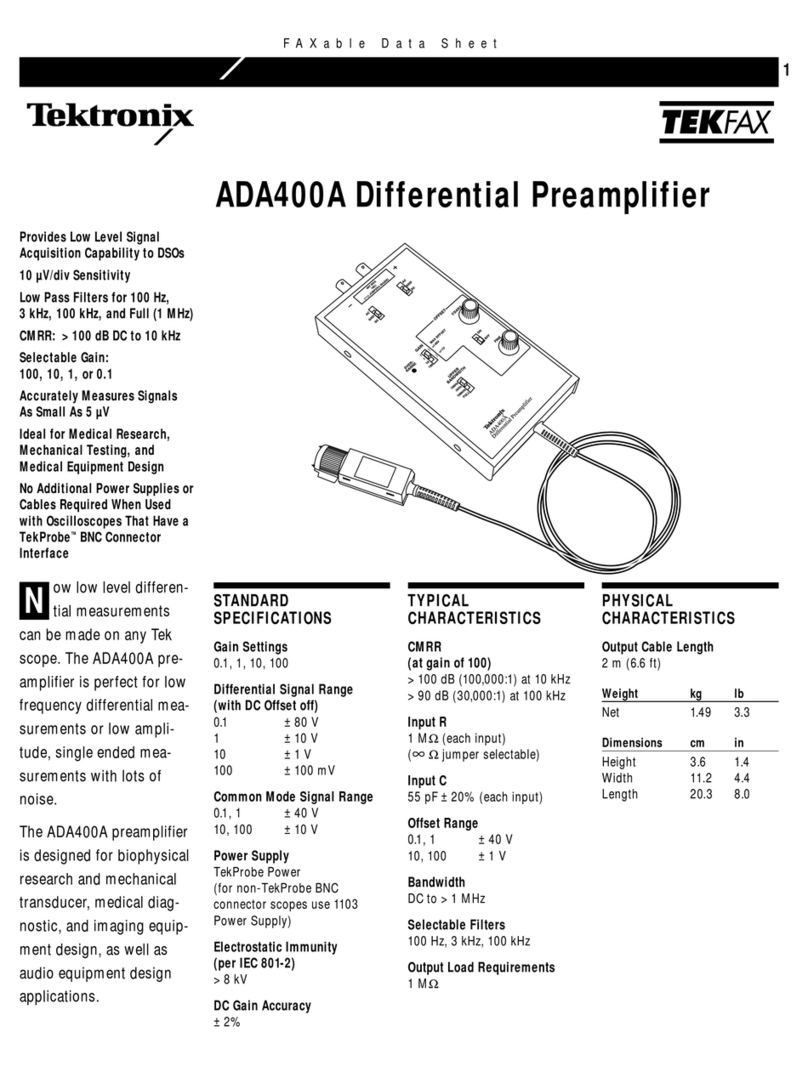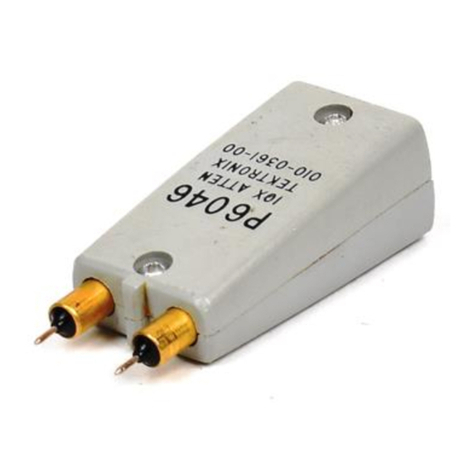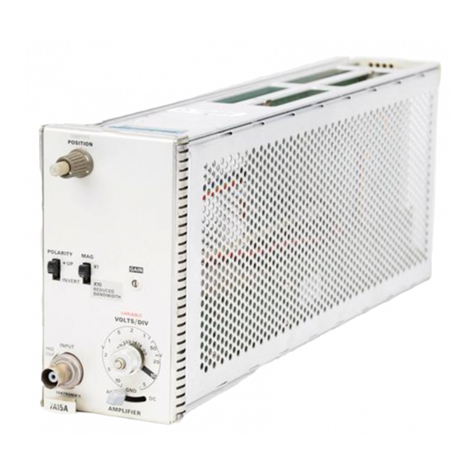Tektronix 7a15a User manual
Other Tektronix Amplifier manuals

Tektronix
Tektronix 2A63 Product guide
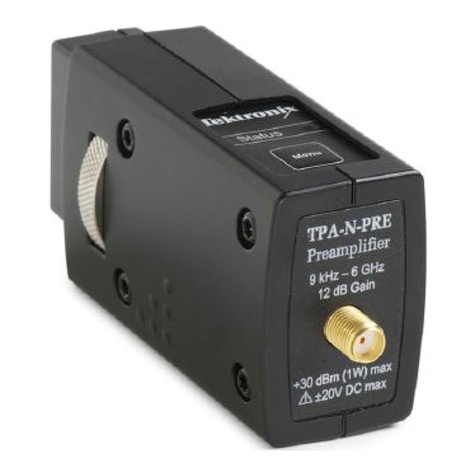
Tektronix
Tektronix TPA-N-PRE User manual
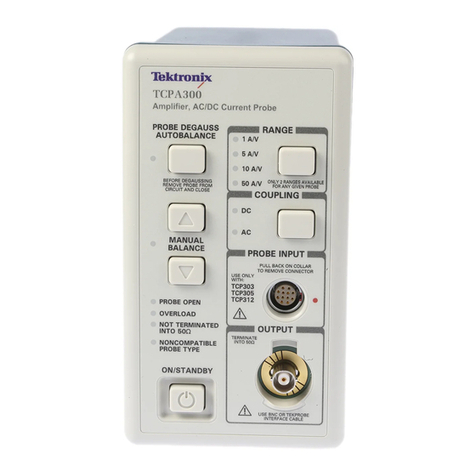
Tektronix
Tektronix TCPA300 SERIES Installation instructions
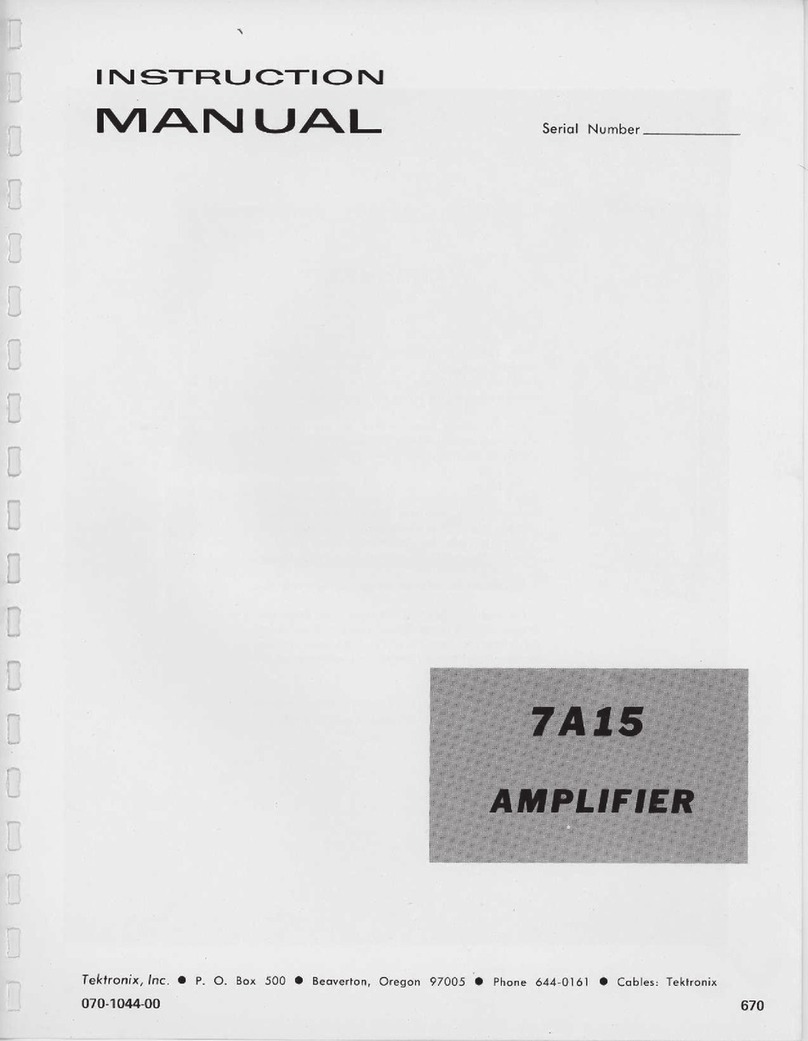
Tektronix
Tektronix 7a15 User manual
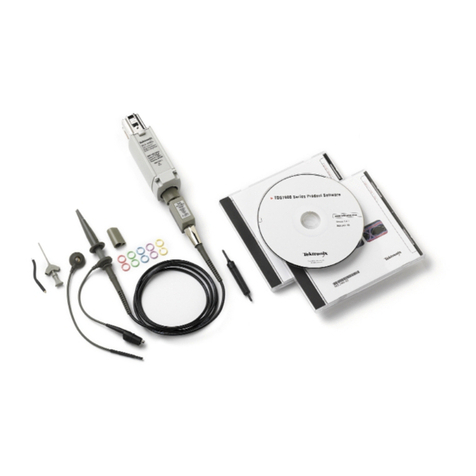
Tektronix
Tektronix TekConnect TCA-1MEG User manual

Tektronix
Tektronix 7A26 User manual
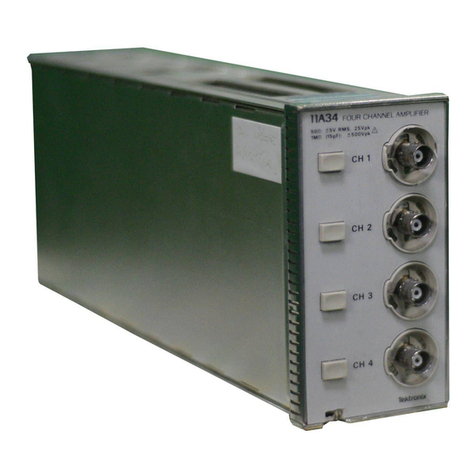
Tektronix
Tektronix 11A34 Owner's manual
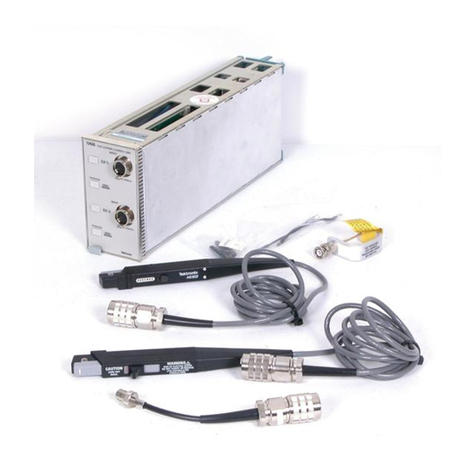
Tektronix
Tektronix 11A16 User manual

Tektronix
Tektronix 7A22 User manual

Tektronix
Tektronix 2A60 Product guide
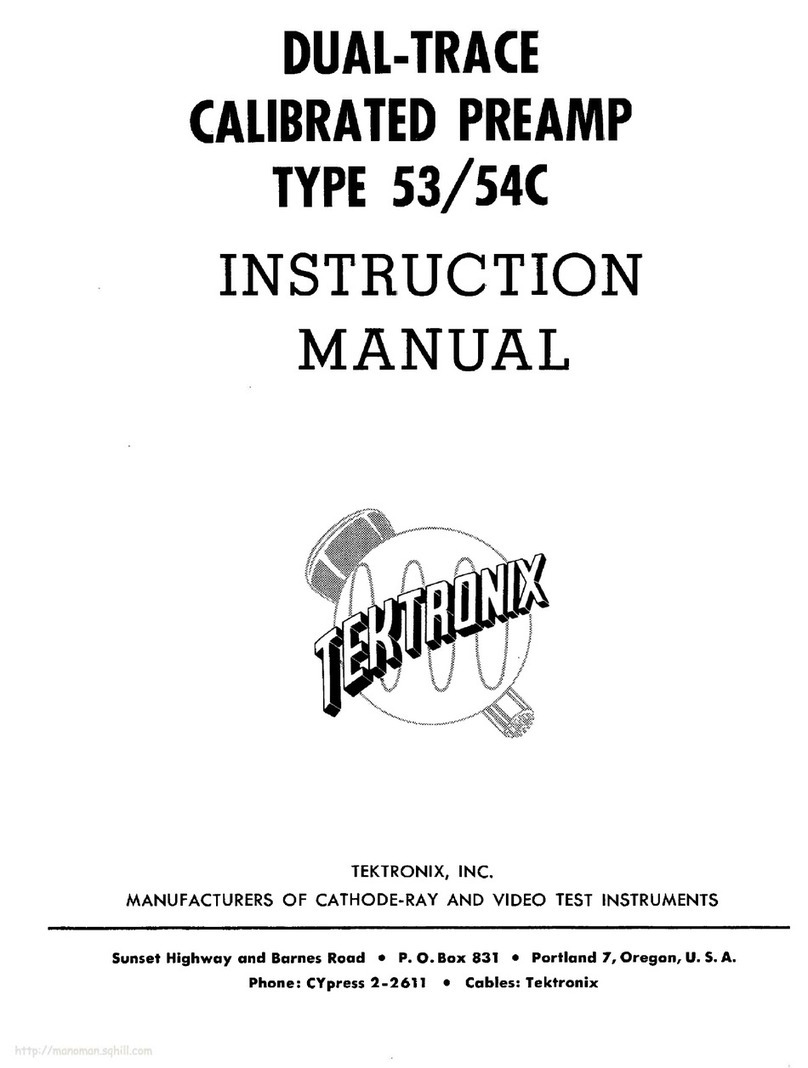
Tektronix
Tektronix 53C User manual

Tektronix
Tektronix 59 Product guide

Tektronix
Tektronix TCPA300 SERIES User manual
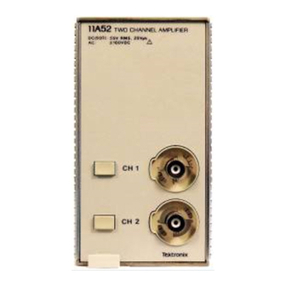
Tektronix
Tektronix 11A52 User manual
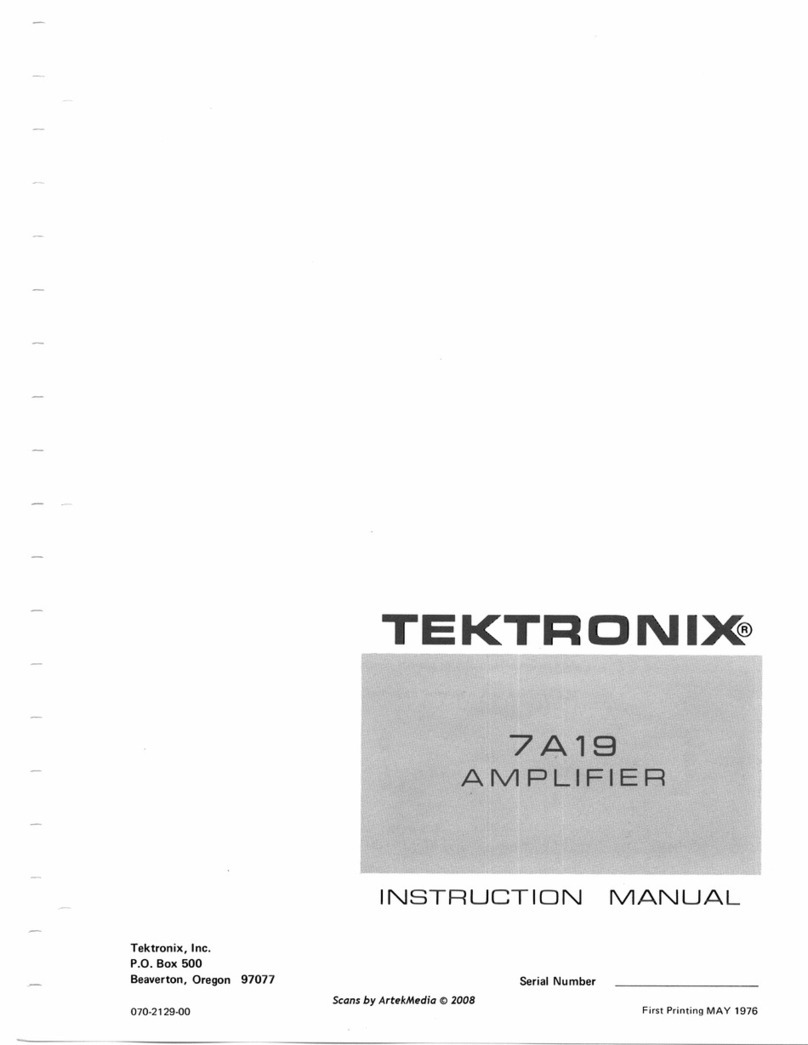
Tektronix
Tektronix 7A19 User manual
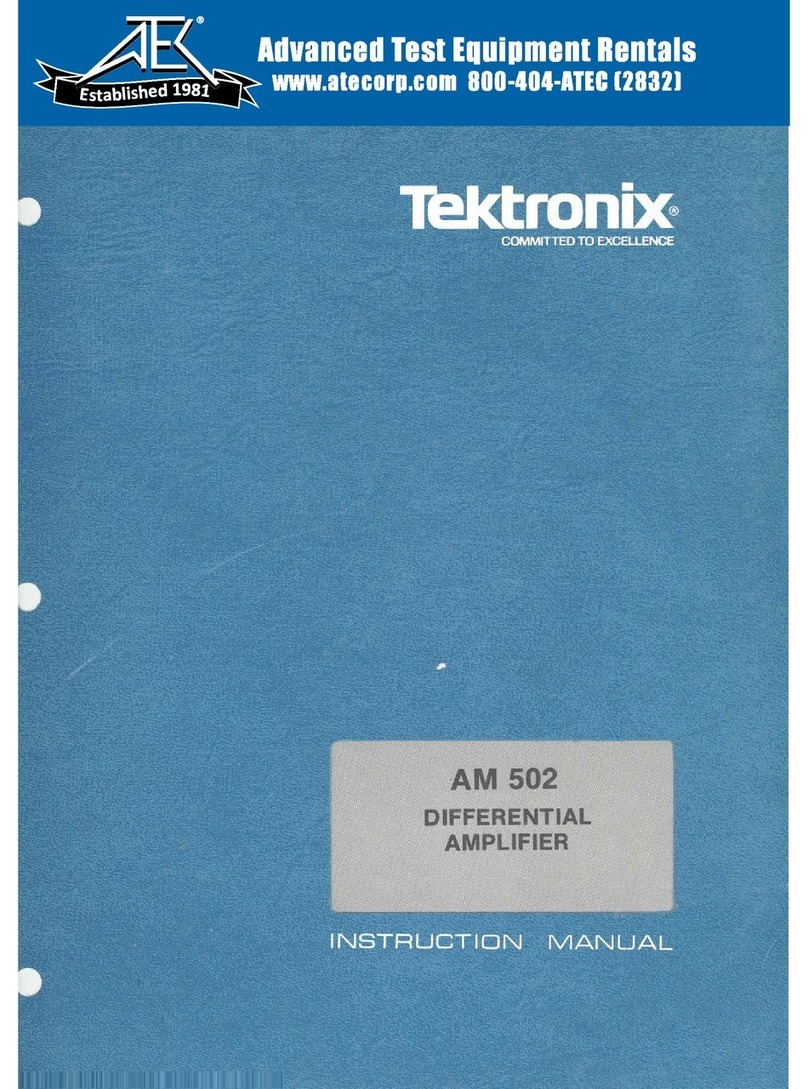
Tektronix
Tektronix AM 502 User manual
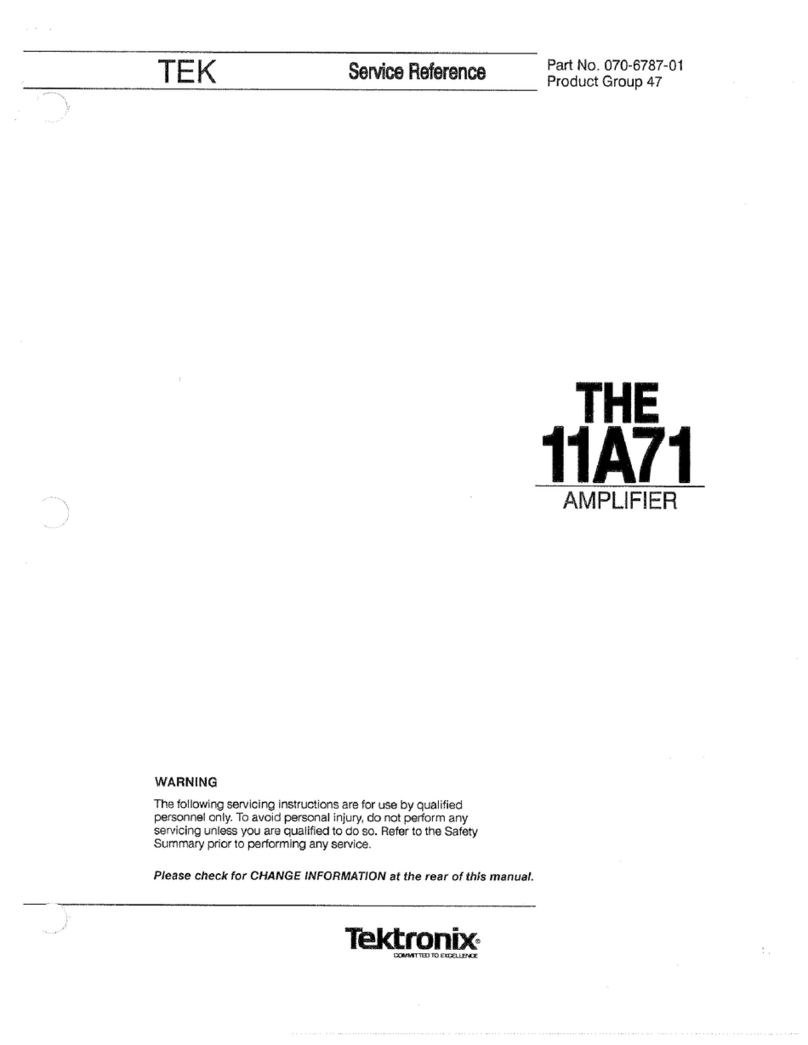
Tektronix
Tektronix 11A71 User manual
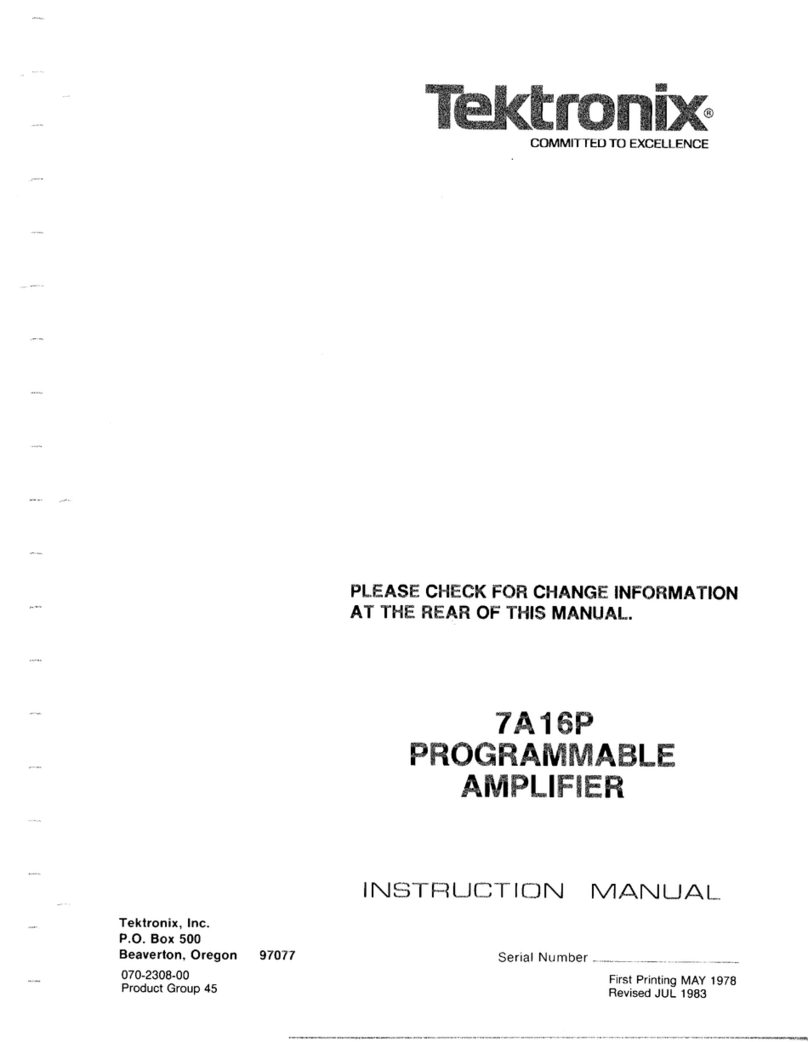
Tektronix
Tektronix 7A16P User manual
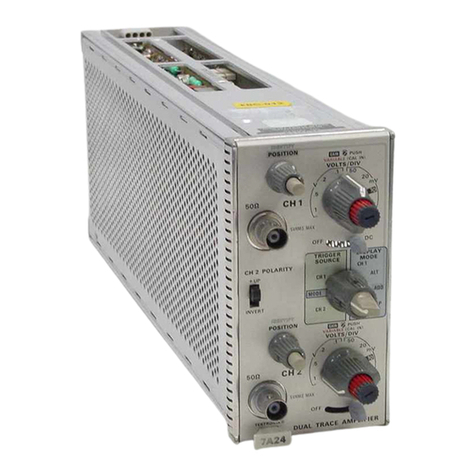
Tektronix
Tektronix 7A24 User manual
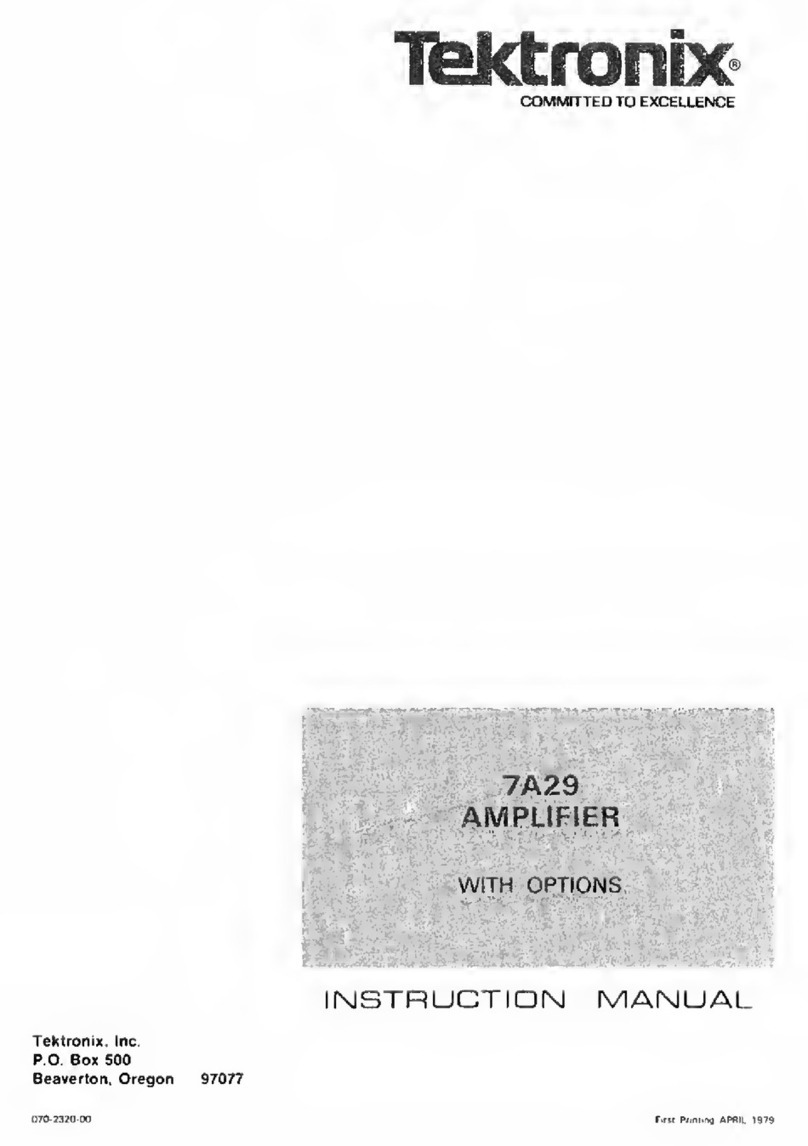
Tektronix
Tektronix 7A29 User manual

